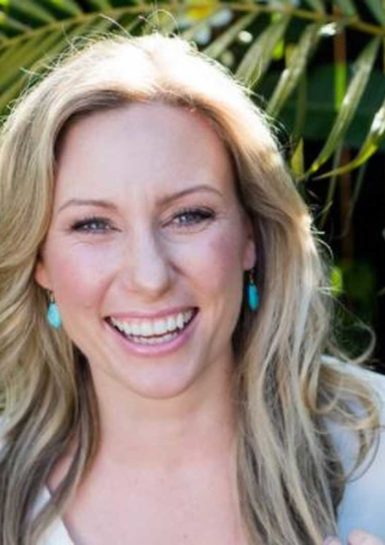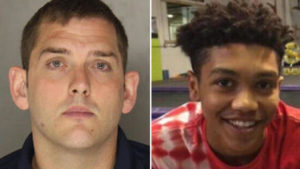
Officer Accused of Shooting Minnesota Woman Charged
Minneapolis police officer Mohamed Noor has been formally charged in the shooting death of Justine Damond. The shooting that occurred last summer sparked a national debate over police shootings involving unarmed citizens and caused outrage in Damond’s home country of Australia. Noor has been charged with murder and manslaughter in relation to the shooting.
According to charging documents unsealed Tuesday afternoon Noor was charged with third-degree murder for “perpetrating an eminently dangerous act and evincing depraved mind” and second-degree manslaughter for “culpable negligence creating unreasonable risk”.
For those that may not remember the circumstances, Damond had called the police because she heard a woman that sounded like she was screaming for help, on the 911 call, she stated the woman may have been having sex, but she sounded as if she were in trouble. Damond then went out into the alley to see if she could still hear the woman and to wait for the police. According to reports, when officers arrived in the alley Damond was waiting in, she approached the car and there was a sudden noise (presumably Damond tapping on the the window). The officer in the passenger seat, when he heard the noise, fired his weapon out of the driver’s side window, striking Damond and ultimately killing her.
The incident occurred in July of 2017, nearly nine months ago, and the officer is only now being charged, and only now has been fired. Reports state that the investigation was slowed by lack of cooperation by fellow police officers and a desire to ensure a thorough investigation before charging the officer.
There is a narrative in this country regarding police violence towards unarmed civilians. In 2017 police were responsible for 987 civilian deaths. Of those 987 deaths, 68 were unarmed, and Justine Damond attributed to that number.
The first question we have to ask ourselves is, are we willing to accept 987 civilian deaths a year as acceptable? Put another way, are we willing to accept that our law enforcement officers who are sworn to protect and serve, kill nearly 1,000 people a year, to keep the rest of us safe? For some people the answer to that question is a resounding yes, and they will point to the fact that the United States has a population of 300,000,000 people, and when you consider the number of police interactions that happen across the country on a daily basis, less than 1000 people a year is negligible and an acceptable outcome in the name of law and order. The flip side of that that line of thinking is that 1000 people a year is not acceptable, and when officers can kill 1000 people a year with little or no consequence, especially where the person killed is a person of color, 1000 people is entirely too many and something must be done.
To figure out where you come out on this you may want additional data on the breakdown of the shootings, to help get to root causes. Let’s keep in mind that this data is being analyzed by news outlets, government agencies, political think tanks, and universities across the country so this will be a very rudimentary review of the data at best, but bear with us.
Starting with gender, 95% of the civilians killed by police are men. Whites make up 46% of deaths while blacks make up 22% of those killed by police. 58% of those killed had a gun, while as previously stated 6% were unarmed. There are other data points that could be added to this, but this gives us a basic high level view of who is being killed by police. What we know is that it’s mostly white men with guns that are killed by police. We also see that black men are killed at a disproportionately higher rate when compared to the percentage of the black US population. The US black population has held steady at 13%, and black men make up roughly 21% of those killed by police. For reference whites make up 61% of the US population. When compared to a study published by the Guardian using 2012 numbers, the 2017 numbers are down 10% in terms of percentage of black men killed by police, so the numbers are trending in the right direction. Also when we look at the number of unarmed black men killed by police we see that there were 19 of those deaths, or 2% of those killed by police overall.
Again, if you’re willing to accept those numbers as the cost of keeping law and order and keeping people safe, then this is settled for you and there is nothing else to discuss. If you are not willing to accept those numbers then we should think about what we’re advocating for or against and if we actually know and does it actually make sense?
The pragmatist in me can easily look at these numbers and tell you that, when you take the total 300 million people in the United States and say that the police only kill 1000 people a year, there is a part of me that can live with that number as the price of doing business. It’s cold and unrelenting and lacks completely empathy, but for part of me I see some truth in that thought process. The other side of me can’t think that way though. I do have empathy and I’m not that cold and I have a serious issue with the officers of the law killing the equivalent to a average size high school class worth of people every year. Yes its only 1000 people compared to 300,000,000, but those 1000 people had families and friends. The death of person doesn’t just impact that person, it touches dozens of lives, including the officers that have pulled the trigger. For the 1000 people killed there are 1000 officers (assuming none of the officers killed multiple suspects which is a possibility) that now have to live with a death on their conscious for the rest of their lives.
In terms of black men being disproportionately murdered by the police, while the numbers seem small they are significant on multiple levels. The data tells us that a black person in an urban setting (or any setting) is more likely to have an incident with a police officer than a white person (actually this doesn’t quite tell us that, but there is data support this here). If there are disproportionately more incidents with police than, the chances of something going fatally wrong increase.
On a base level some will look at that and say, blacks are more prone to crime than whites, so that explains it, end of story, cops aren’t racists, blacks are just more likely to be criminals. If that is your thought process please understand that if we were face to face I’d be giving you the look of disappointment and judgement that your dad gave you when you said something utterly stupid. By now we know that black people are policed different than white people. Police in black neighborhoods are more aggressive and use much more aggressive tactics than they do in white neighborhoods. Police are also more likely to target a person of color in a white neighborhood for questioning than they would a white person in that same neighborhood. At this point if you say “well obviously”, think about it for a second, then ask yourself why is that so obvious, then come back to the conversation. If police using tactics that are more aggressive in one situation than the other, the likelihood of different outcomes is very high.
Going back and looking at the numbers and taking into account what we know about police interactions, if we could reduce contact with police for black people, we should in turn reduce the number of deaths by police to below the thresholds of proportionality, keeping in mind to address this issue it’s not just about pulling the police out of these neighborhoods and walking away. We have to start to address the actual issues of drug proliferation and gang affiliation. Yes we have to change police tactics but we can’t ignore root causes and deep rooted symptoms.
But where does all that leave us with Justine Damond? She was a white, unarmed, woman in a middle class white neighborhood. This is where empathy matters, and it matters because she was an innocent person, not because of the demographics previously listed. We should have empathy for innocent people in general and even those accused of a crime, but have yet to receive due process under the law. We should care when a Justine Damond gets gunned down for no reason, and Philando Castile who was gunned down in that same state, should receive the same empathy. And if we care about our fellow citizens, neighbors, and coworkers, friends and family, we should want greater assurances that this is less likely to happen to them. 1000 is too many, and we should all be pushing to see that number reduced by half sooner than later, and more if possible. This would require better training of police officers at the local level, and changes in tactics. This would require different approaches than previously thought possible that may reduce risk for all parties involved.
By sending police out into the streets with a the “its either me or them and I have to come home to my family” as the first and last thing they say when they walk in or out of the station, we are sending them at with a soldier of war mentality, and everyone not wearing a badge is on the wrong side of that war.
Steve
Steve is an affordable multifamily housing professional that is also the co-founder of Whiskey Congress. Steve has written for national publications such as The National Marijuana News and other outlets as a guest blogger on topics covering sports, politics, and cannabis. Steve loves whiskey, cigars, and uses powerlifting as an outlet to deal with the fact that no one listens to his brilliant ideas.



